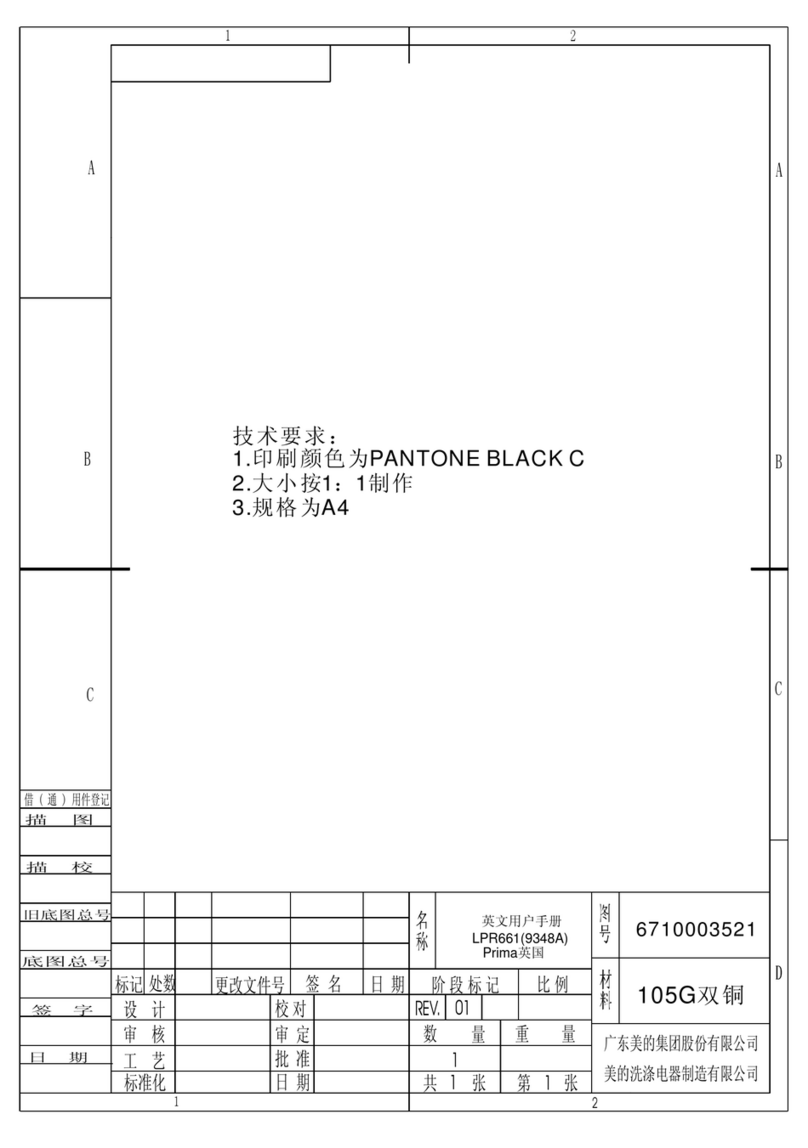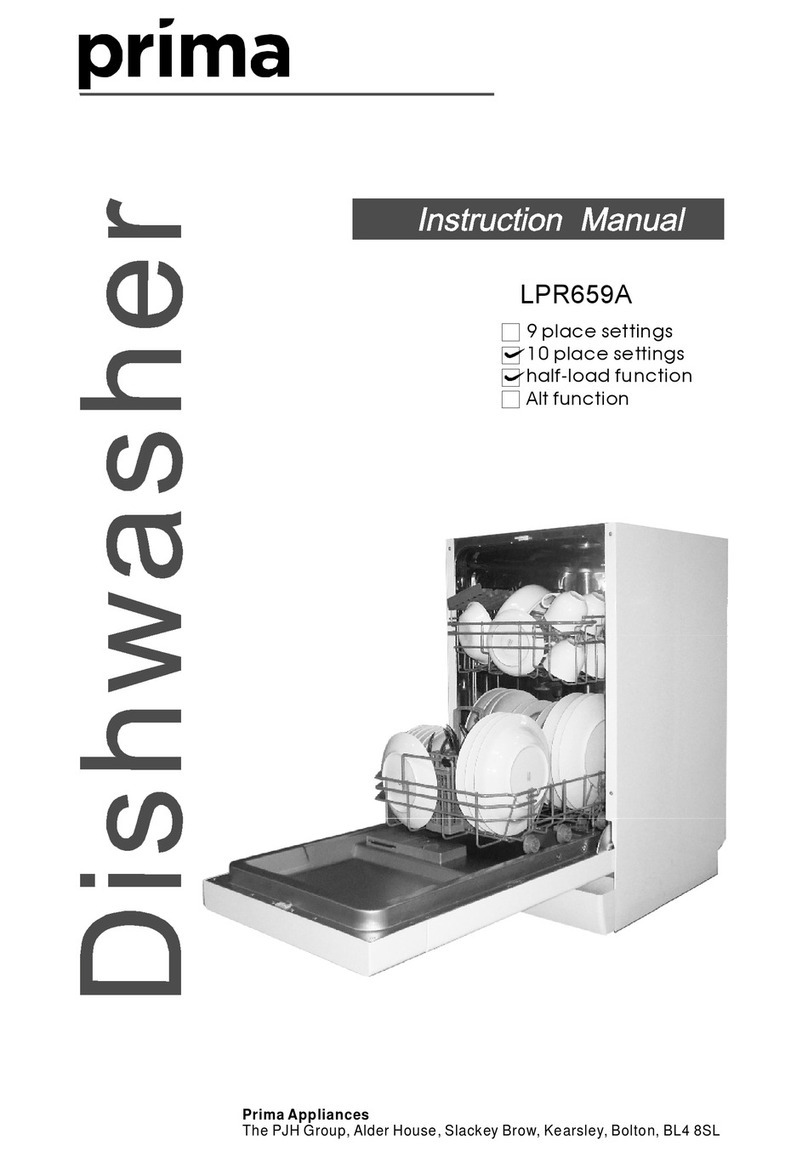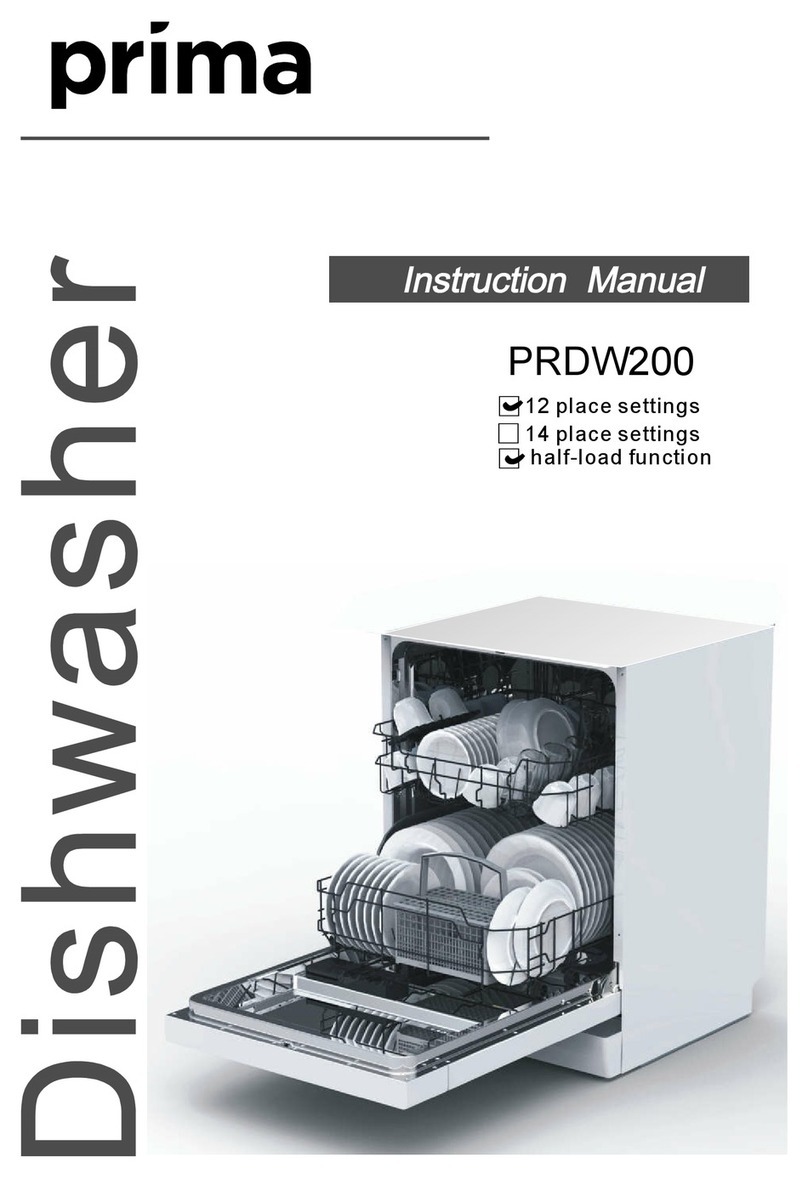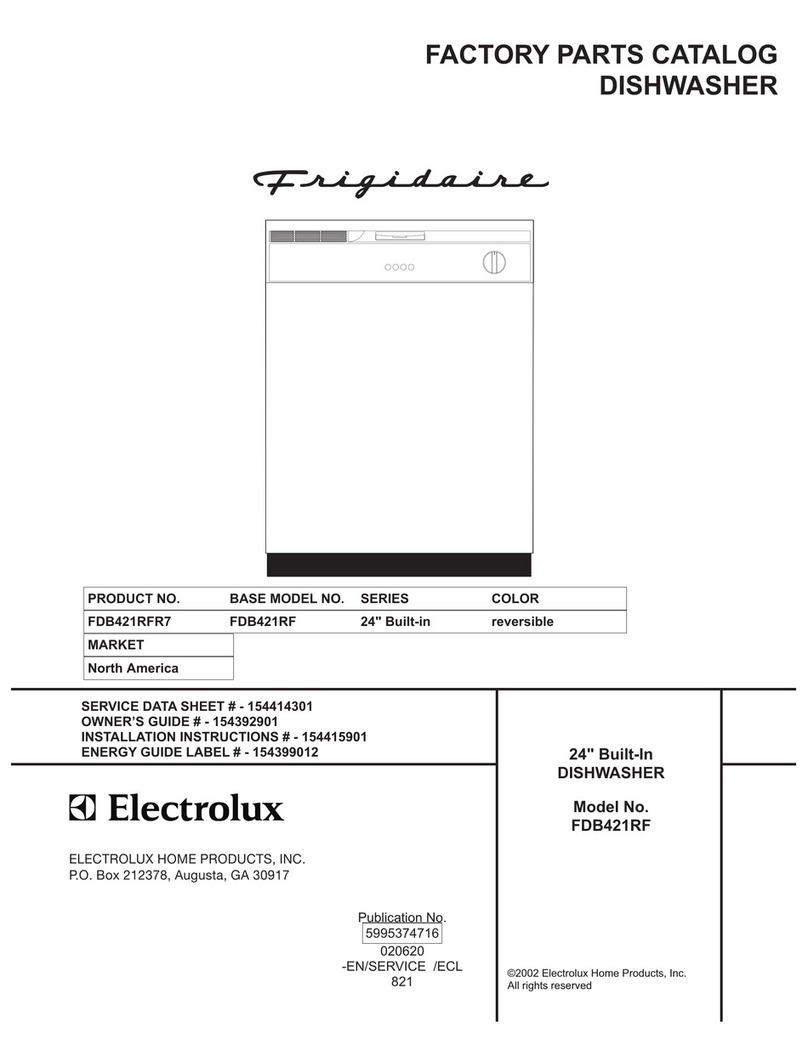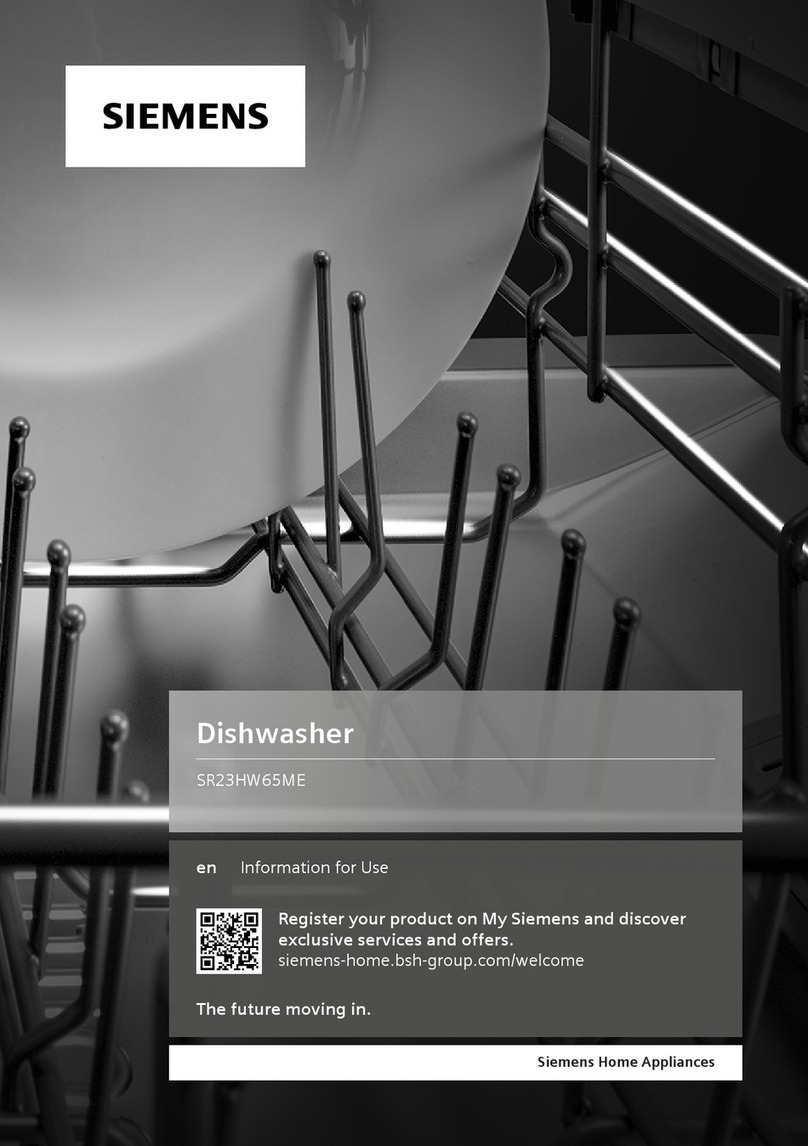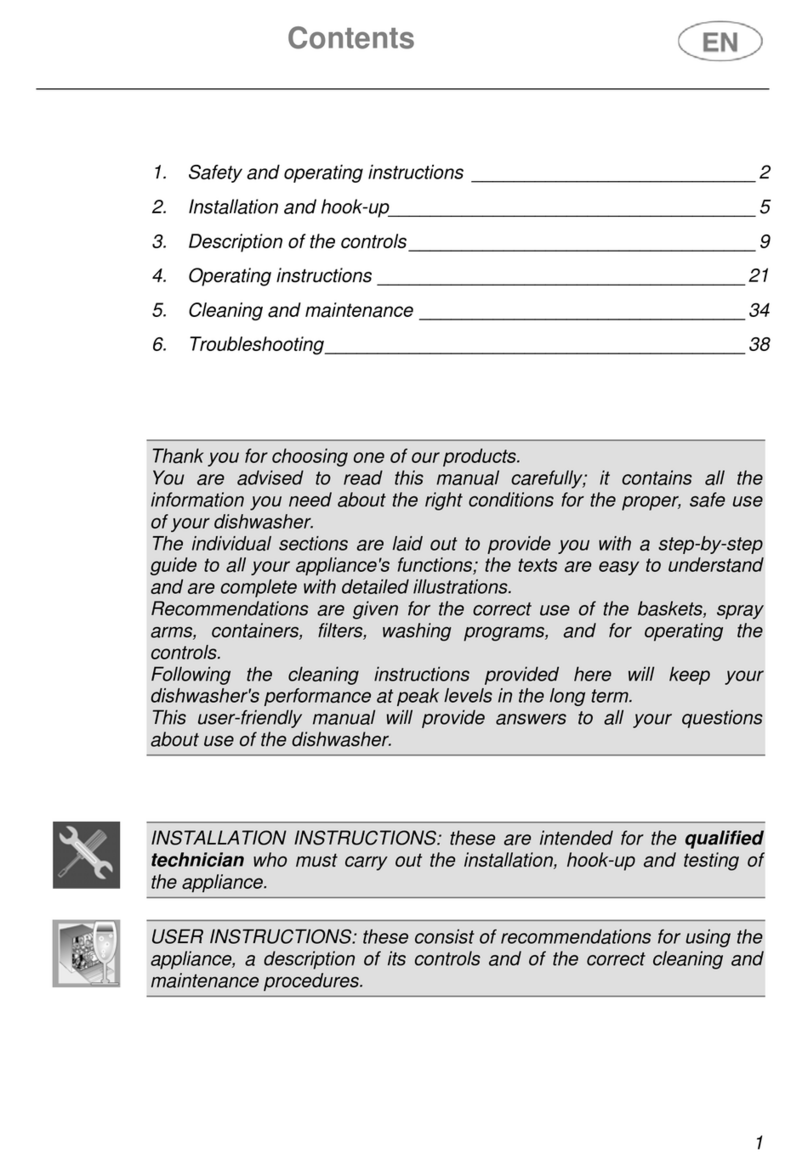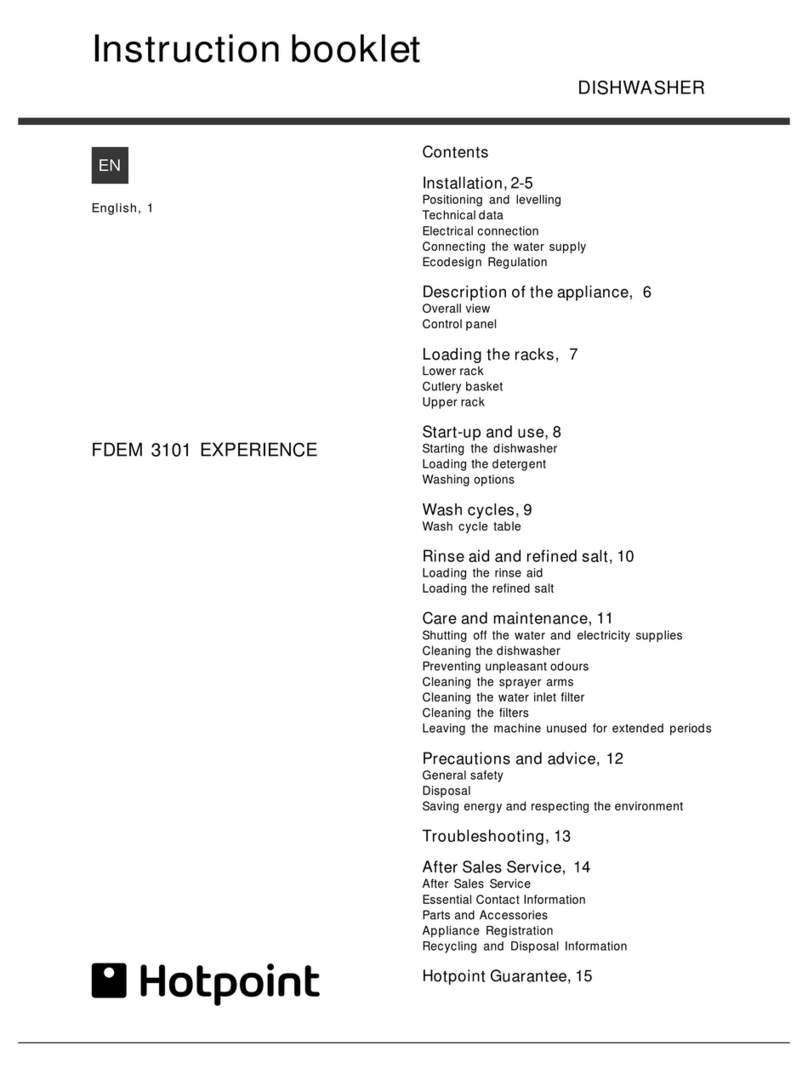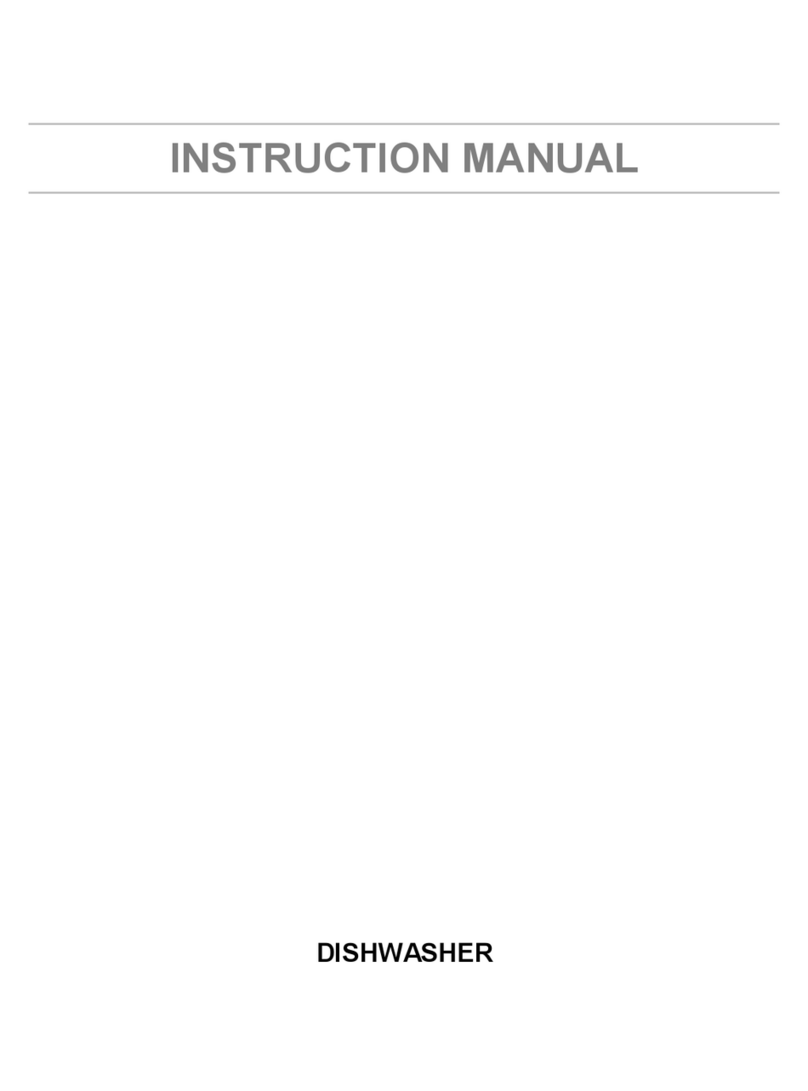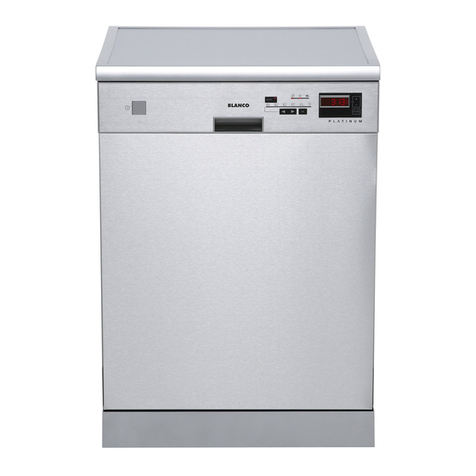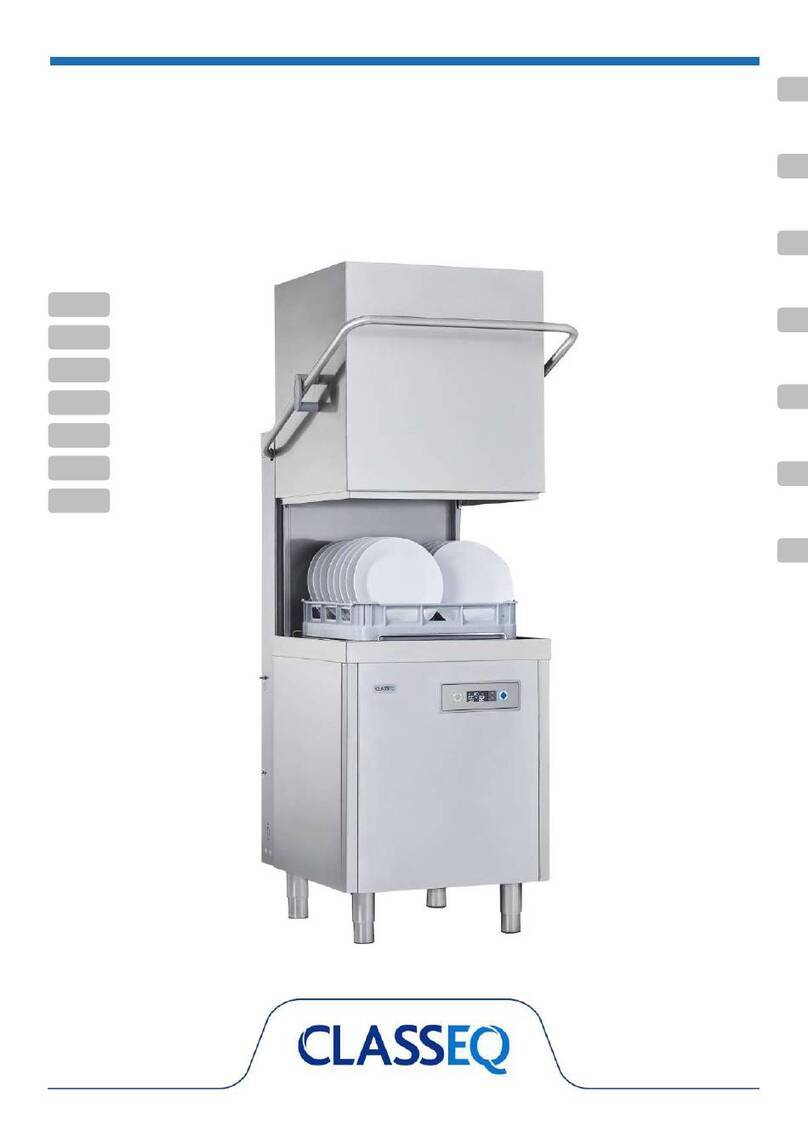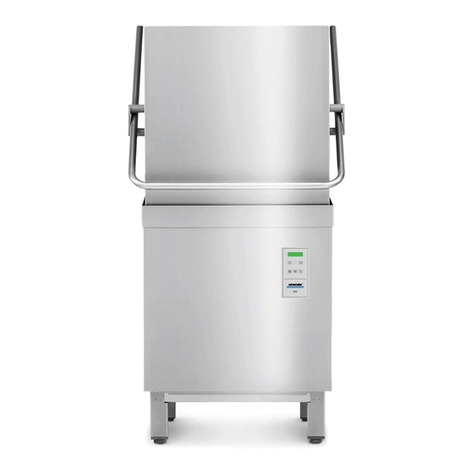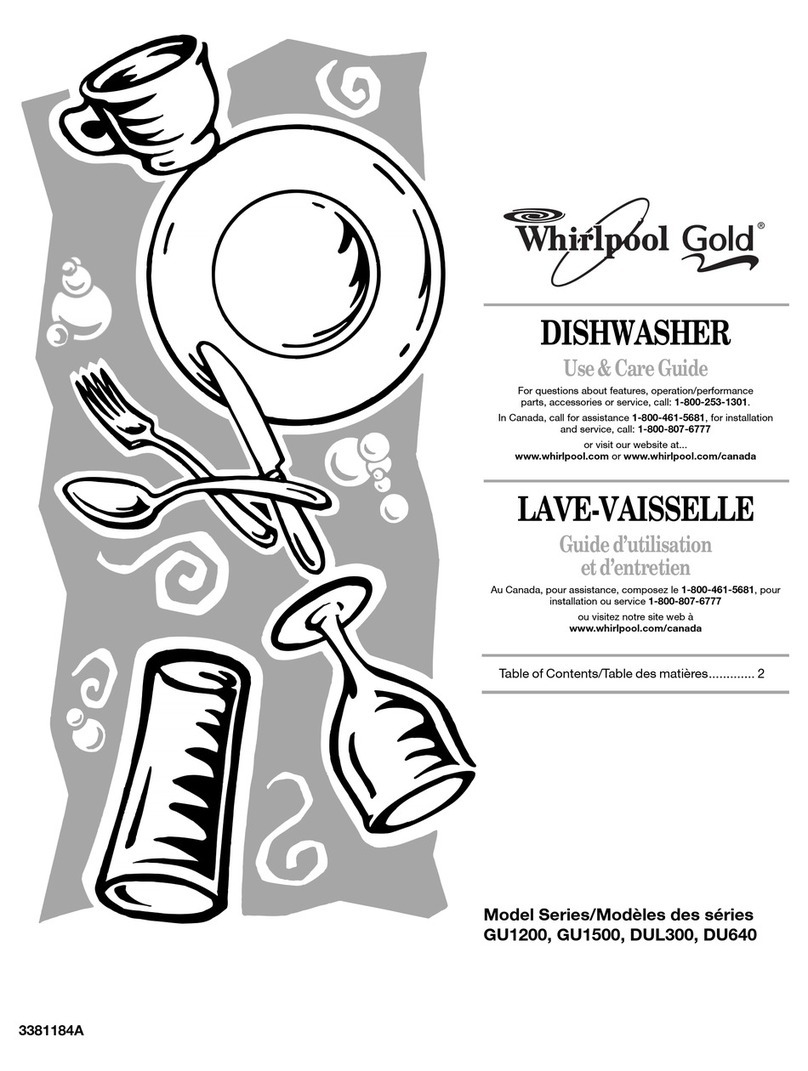Prima LPR661A User manual

Instruction ManualInstruction Manual
LPR661A
DishwasherDishwasher
14 place settings
PrimaAppliances
The PJH Group,Alder House,Slackey Brow,Kearsley,Bolton, BL4 8SL
12 place se ttings
half-load function
Alt function

To review the section on troubleshooting Tips
will help youto solve somecommon problems
by yourself .
NOTE:
Dear Customer,
Please carefully read this manualbefore using the
dishwasher, itwill help youto use and maintain the
dishwasher properly.
Pass it on to anysubsequent owner ofthe appliance.
This manual containssections on safetyInstructions,
Operating Instructions, InstallationInstructions and
Troubleshooting Tips, etc.
The manufacturer,following a policyof constant
development and updatingof the product, may
make modifications withoutgiving prior notice.
This user manualshall also be got from the
manufacturer or responsiblevendor.
Read this Manual
Before Calling for Service
Keep it to refer to it at a later date.
If you can not solve the problems by yourself ,
please ask forthe help of professional technicians.
1) Safety Information..........................................11) Safety Information..........................................1
2) Quick operation guide..................................... 22) Quick operation guide..................................... 2
Dishwasher Features.................................... ...3
4) Prior usingfor the firsttime...............................44) Prior usingfor the firsttime...............................4
A Water Softener...........................................4
5) Loading theDishwasher Basket........................95) Loading theDishwasher Basket........................9
Attention before orafter loading theDishwasher
Baskets..........................................................9
7) Maintenance andcleaning..............................137) Maintenance andcleaning..............................13
Filtering System.............................................13
Caring for the Dishwasher...............................14
B Loading the Salt into the Softener.................5
C Fill the RinseAid Dispenser.........................6
D Function of Detergent .................................7
Loading the upperBasket...............................10
Loading the Lower Basket...............................10
6) Starting awashing programme........................116) Starting awashing programme........................11
Wash Cycle Table...........................................11
Turning on the Appliance................................11
Change the Programme..................................12
At the end of the Wash Cycle...........................12
8) Installation instruction....................................158) Installation instruction...................... ............15..
9) TroubleshootingTips......................................229) TroubleshootingTips................................ ....22..
Before calling for service.................................22
Error codes...................................................23
Technicalinformation.....................................24
3) Operation Instruction.......................................33) Operation Instruction.......................................3
Control Panel...................................................3
.................................. 15Installation preparation
Aesthetic panel's dimensions and installation...16
..............18Tension adjustment of the door spring
.............................. 18Connection of drain hoses
......................... 19Dishwasher installation steps
About Electricity Connecting...........................20
Cold Water Connection.................................. 21
Loading the baskets according to En50242Loading the baskets according to En50242

1-11-1
.
This appliance can be used by children aged from 8
years and above and persons with reduced physical,
sensory or mental capabilities or lack of experience
and knowledge if they have been given supervision
or instruction concerning use of the appliance in a
safe way and understand the hazards involved.
Children must not play with the appliance. Cleaning
and user maintenance shall not be made by children
without supervision. For EN60335-1
This appliance is not intended for use by persons
(including children )with reduced physical, sensory
or mental capabilities, or lack of experience and
knowledge ,unless they have been given supervision
or instruction concerning use of the appliance by a
person responsible for their safety. For IEC60335-1
This appliance is for indoor use only, for household
use only.
To protect against the risk of electrical shock, do not
immerse the unit, cord or plug in water or other liquid.
Please unplug before cleaning and maintenance the
appliance .
Use a soft cloth moisten with mild soap, and then use
a dry cloth to wipe it again.
This appliance has been designed for use in a
domestic environment. Commercial use will invalidate
the warranty
1.IMPORTANT SAFETY INFORMATION1.IMPORTANT SAFETY INFORMATION
When using your dishwasher,
follow the precautions listed below:
WARNING!WARNING!

1-21-2
This appliance must be earthed. In the event of a
malfunction or breakdown, earthing will reduce the risk
of an electric shock by providing a path of least
resistance of electric current. This appliance is equipped
with a cord having an equipment-earthing conductor
and a grounding plug.
The plug must be plugged into an appropriate outlet that
is installed and earthed in accordance with all local
codes and ordinances.
Improper connection of the equipment-earthing
conductor can result in the risk of an electric shock.
Check with a qualified electrician or service
representative if you are in doubt whether the appliance
is properly grounded.
Do not modify the plug provided with the appliance;
If it does not fit the .
Have a proper installed by a qualified
electrician.
Do not abuse, sit on, or stand on the door or dish rack of
the dishwasher.
Do not operate your dishwasher unless all enclosure
panels are properly in place.
Open the door very carefully if the dishwasher is
operating, there is a risk of water .
Do not place any heavy objects on or stand on the door
when it is open. The appliance could tip forward.
When loading items to be washed:
1) Locate sharp items so that they are not likely to
damage the door seal;
power socket
power socket
spilling out
EARTHING INSTRUCTIONS

1-31-3
2) Warning: Knives and other utensils with sharp points
must be loaded in the basket with their points down or
placed in a horizontal position.
Check that the detergent powder is empty after
completion of the wash cycle.
Do not wash plastic items unless they are marked
dishwasher safe or the equivalent.
For plastic items n check the manufacturer's
ot so marked,
recommendations.
Use only detergent and rinse additives designed for
an automatic dishwasher.
Never use soap, laundry detergent, or hand washing
detergent in your dishwasher.
Children should be supervised to ensure that they do not
play with the appliance.
The door should not be left open, since this could increase
the risk of tripping.
If the supply cord is damaged, it must be replaced by the
manufacturer or its service agent or a similarly qualified
person in order to avoid a hazard.
During installation, the power supply must not be
excessively or dangerously bent or flattened.
Do not tamper with controls.
The appliance is to be connected to the water mains using
new hose sets and that old hose-sets should not be reused.
The maximum number of place settings to be washed
is 14.
The maximum permissible inlet water pressure is 1MPa.
The minimum permissible inlet water pressure is 0.04MPa.

Dispose of the dishwasher packaging material
correctly.
All packaging materials can be recycled.
Plastic parts are marked with the standard
international abbreviations:
PE for polyethylene, e.g. sheet wrapping material
PS for polystyrene, e.g. padding material
POM polyoxymethylene, e.g. plastic clips
PP polypropylene, e.g. Salt filler
ABS Acrylonitrile Butadiene Styrene, e.g. Control
Panel .
Packaging material could be dangerous for children!
For disposing of package and the appliance please
go to a recycling centre. Therefore cut off the power
supply cable and make the door closing device
unusable.
Cardboard packaging is manufactured from recycled
paper and should be disposed in the waste paper
collection for recycling.
By ensuring this product is disposed of correctly, you
will help prevent potential negative consequences
for the environment and human health, which could
otherwise be caused by inappropriate waste handling
of this product.
For more detailed information about recycling of this
product, please contact your local city office and your
household waste disposal service.
DISPOSAL: Do not dispose this product as unsorted
municipal waste. Collection of such waste separately
for special treatment is necessary.
WARNING!WARNING!
DisposalDisposal
1-41-4

Compartment A:Compartment A:
With each wash cycle.
Compartment B:B:
For programmes with pre-wash only.
(Follow the user instructions!)
Mechanical indicator C.Mechanical indicator C.
Electric indicator on control panel (if provided).
Check the rinse aid level
(On models with water softener system only.)
Electric indicator on control panel (if provided).
If there is no salt warning light in the control panel
(for some models), you can estimate when to fill the salt into
the softener by the number of cycles the dishwasher has run.
Check the regeneration
salt level
Load the baskets
Select a programme
T urn on the water tap ,close the door . The machine will start working after about 10 seconds.
Running the dishwasher
Switch off the appliance
Turn off the water tap,
unload the baskets
Fill the detergent dispenser
Warning: wait a few minutes (about 15 minutes) before unloading the dishwasher to avoid handling
the dishes and utensils while they are still hot and more susceptible to break.
They will also dry better.Unload the appliance, starting from the lower basket.
Changing the programme
Add forgotten dishes in the
dishwasher.
Scrape off any large amount of leftover food. Soften remnants of burnt food in pans,
then load the baskets. Refer to the dishwasher loading instructions.
If the appliance is switched
off during a wash cycle.
Open the doorcarefully.
Hot steam mayescape
when the dooris opened!
WARNING!
If the appliance is switched off during a wash cycle, when switched
on again, please re-select the washing cycle and operate the dishwasher
according to the original Power-on state ).
Switch on the appliance
Open the door,press the On/Off button to switch on the appliance .
1.Open the door a little to stop the dishwasher.
2.After the spray arms stop working, you can open the door completely.
3.Add the forgotten dishes.
4.Close the door, the dishwasher will start running again after 10 seconds.
2.Quick operation guide2.Quick operation guide
For detailed operating method read the corresponding content on the instruction manual.
When the working cycle has finished, the buzzer of the dishwasher will sound 8 times, then stop.
Turn off the appliance using the ON/OFF button.
Since the appliance is standing by, it will power off automaticly after 30 minutes without any operation.
Press the program button to select a desired wash cycle, also you can select a function;
.( See the section entitled Operation instruction )
1. A running cycle can only be modified if it has been running for a short time. Otherwise the detergent
may have already been released and the water already drained. If this is the case, the detergent
dispenser must be refilled.
2. Open the door.
3. Press the button which program you want to change more than 3 seconds, new program indicator lights.
4. Close the door. Restart the dishwasher.
AA
CC
BB
2

11
88
223344
66
77
55
99
10101111
3.Operation Instruction3.Operation Instruction
Dishwasher FeaturesDishwasher Features
Control PanelControl Panel
before using it for the first time.
To get the best performance from your dishwasher, read all operating instructions
IMPORTANTIMPORTANT
5.On/Off Button: To turn on/off the power supply.
2.Delay Button : To Press the button to delay.
9.Salt and rinse aid warning indicators: Toshow
when the salt container or dispenser need to be
refilled
11.Program indicators: to show which program
you have chose;
10.Display screen: to show the reminding time and delay
time,error codes etc.
6.Power indicator: To show when the power on.
1. Program Button : ToPress the button to select a
wash Program.
7.Haft load indicator : To show when you select the
haft load function .
4.Half load functions Button: To select Half load
functions. (With this Half load function you can
only use it when you have only about or less than
6 place settingdish ware, andyou will see less
water and energy consumption , can only be used
with Intensive, Normal,ECO, Glass and90 min .)
3.Extra drying Button: To select Extradrying function.
Extra drying function Only be used with Intensive,
Normal, ECO,Glass,90min.);
8.Extra drying indicator: To show when you select the
extra drying function .
9
Back View
Front view
Dispenser
Cup Shelf
Spray arms
Filter assembly
Inlet pipe connector
Drain pipe
Lower Basket
Inner pipe
Upper Basket
1Salt Container
33
5
6
7
8
9
10
3
2
4
10
1
2
3
4
5
6
7
8

The water softener must be set manually, using the water hardness dial.
The water softener is designed to remove mineralsand salts fromthe water, which would have
a detrimental or adverse effect on the operation of the appliance.
The higher thecontent of these minerals andsalts, the harder your wateris.
The softener shouldbe adjusted accordingto the hardness of the water in your area. Your local Water Authority
can advise you on the hardness of the water in your area.
Adjusting Salt Consumption
The dishwasher is designed to allow for adjustment in the amount of salt consumed based on the hardness of
the water used.This is intended to optimise and customise the level o f salt consumption.
1. Open the door ,Switch on the appliance;
2. Press theRapid button formore than 5 seconds to start the water softener
set model within 60seconds after the appliance was switched on( The Salt and
Rinse aid warninglightswill be onperiodically when it get in the set model );
3. Press theRapid button toselect the proper set according to your local environment,
the sets will change in the following sequence: H1->H2->H3->H4->H5->H6;
4. Press the Power button to end the set up model.
WATER SOFTENER
The hardness of the water varies from place to place. If hard water is used in the dishwasher, deposits will
form on the dishes and utensils.
The appliance is equipped with a special softener that uses a salt container specifically designed to eliminate
lime and minerals from the water.
4.Prior using for the first time4.Prior using for the first time
Contact your local water board for information on the hardness of your water supply.
dH
mmol/l
0~90~5 0~0.94
H1
10-20
6-11
1.0-2.0 H2
21-30
12-17 2.1-3.0
H3
H4
fH
0~6
7-14
15-21
Clarke
WATER HARDNESS
Selector Position
Please follow the steps below for adjustment in salt consumption.
18-22 31-40 22-28 3.1-4.0
4
A. Water SoftenerA. Water Softener
NOTE:NOTE:
If your model does not have any water softener, you may skip this section.
¡ã
Clark: British degree
¡ã
fH: French degree
¡ã
DH: German degree
Note:1Note:1 dH=1.25 Clarke=1.78 fH=0.178mmol/l
¡ã ¡ã
¡ã
1
41-60
23-34 4.1-6.0 H5
H6
29-42
35-55 61-98 43-69 6.1-9.8
Note:2Note:2
The manufactory setting: H3 (EN 50242)
Before using your dishwasher for the first time:
A. Set the water softener
B. Add1.5Kg dishwasher salt and then full fill the salt container with water
C. Fill the rinse aid dispenser
D. Fill in detergent
0
9
12
20
Salt consumption
(gram/cycle)
30
60

1. The salt container must only be refilled when the salt warning light inthe control panelcomes on.
Depending on howwell the saltdissolves, the salt warning light may still be on even though the
salt container isfilled.
If there isno salt warninglight in the control panel (for some Models),you can estimate when to fill
the salt intothe softener bythe cycles that the dishwasher has run.
2. If thereare spills ofthe salt, a soak or a rapid program should be run toremove the excessivesalt.
Always use the salt intended for use with dishwasher.
The salt container is located beneath the lower basket and should be filled as explained
in the following:
Attention!
Only use salt specifically designed for the use in dishwashers! Every other type of
salt not specifically designed for the use in a dishwasher, especially table salt, will
damage the water softener. Incase of damages caused by the use of unsuitable
salt the manufacturer does not give any warranty nor is liable for any damages caused.
Only fill with salt just before starting one of the complete washing programs.
This will prevent any grains of salt or salty water, which may have been spilled,
remaining on the bottom of the machine for any period of time, which may cause
corrosion.
5
B. Loading the Salt Into the SoftenerB. Loading the Salt Into the Softener
C. Fill the Rinse Aid DispenserC. Fill the Rinse Aid Dispenser
The rinse aid is released during the final rinse to prevent water from forming droplets on your dishes, which can
leave spots and streaks. It also improves drying by allowing water to roll off the dishes. Your dishwasher is
designed to use liquid rinse aids. The rinse aid dispenser is located inside the door next to the detergent dispenser.
To fill the dispenser, open the cap and pour the rinse aid into the dispenser until the level indicator turns completely
black. The volume of the rinse aid container is about 110ml.
Rinse AidDispenser
Function of Rinse Aid
Rinse aid is automatically added during the last rinse, ensuring thorough rinsing, and spot and streak free drying.
Attention!
Only use branded rinse aid for dishwasher. Never fill the rinse aid dispenser with any other substances
(e.g. Dishwasher cleaning agent, liquid detergent). This would damage the appliance.
NOTE:NOTE:
OpenOpen
1122
Full fill the salt container with water,It is normal for a small amount of water to come out of the
salt container.
11
22
A After the lower basket has been removed, unscrew and remove the cap from the salt container.
B Place the end of the funnel (supplied) into the hole and introduce about 1.5kg of dishwasher salt.
C
D After filling the container , screw the cap tightly back clockwise.
E The salt warning light will stop being after the salt container has been filled with salt.
FImmediately after filling the salt into the salt container, a washing program should be started (We suggest to use a short
program). Otherwise the filter system, pump or other important parts of the machine may be damaged
by salty water. This is out of warranty.

6
To open the dispenser, turn the cap to the "open" (left) arrow and lift it out.
Pour the rinse aid into the dispenser, being careful not to overfill.
Replace the cap by inserting it aligned with "open" arrow and turning it to the closed (right) arrow.
Adjusting Rinse Aid Dispenser
The rinse aid dispenser has six or four settings. Always start with the dispenser
set on "4". If spots and poor drying are a problem, increase the amount of rinse
aid dispensed by removing the dispenser lid and rotating the dial to "5". If the
dishes still are not drying properly or are show spots, adjust the dial to the next
higher lever until your dishes are spot-free. The recommended setting is "4".
(Factory value is "4".)
Increase the dose if there are drops of water or lime spots on the dishes after washing.
Reduce it if there are sticky whitish stains on your dishes or a bluish film on glassware or
knife blades.
112233
1
2
3
As the rinse aid diminishes, the size of the black dot
on the rinse aid level indicator changes, as illustrated below.
Full
3 / 4 ful l
1 / 2 ful l
1 / 4 full - Should refill to eliminate spotting
Empty
Adjust lever
(Rinse)
Adjust lever
(Rinse)
When to Refill the Rinse Aid Dispenser
If there isno rinse-aid warning light in the control panel, you can estimate theamount from thecolour
of the opticallevel indicator C located next tothe cap. Whenthe rinse-aid container is full, the whole
indicator will bedark .As the rinse-aid diminishes, the size of the dark dot decreases. You should neverlet
the rinse aidlevel fall 1 / 4 full.
during the next wash. Don't forget to replace the cap before you close dishwasher door.
Clean up any rinse aid spilled while during filling with an absorbent cloth to avoid excessive foaming
NOTE:NOTE:
NOTE:NOTE:
Detergents with its chemical ingredients are necessary to remove dirt, crush dirt and transport it out of the dishwasher.
Most of the commercial quality detergents are suitable for this purpose.
D. Function of DetergentD. Function of Detergent
MAXMAX
Proper Use of Detergent
Use only detergentspecifically made for the use in dishwashers. Keep your detergent fresh anddry.
Don't put powdereddetergent into the dispenser until you're ready to wash dishes.
Attention!
C (Rinse-Aid indicator)C

7
Amount of Detergent to Use
Based on theirchemical composition, detergents can be split in two basic types:
Detergent tablets ofdifferent brands dissolve at different speeds. For this reasonsome
detergent tablets cannotdissolve and develop their full cleaning power during short
programs. Therefore please use long programs when using detergent tablets, to
ensure the completeremoval of detergent residuals.
The dispenser mustbe refilled before the start of each wash cycle following the instructions
provided in the wash cycle table . Your dishwasher uses less detergent and rinse aid than
Conventional dishwasher. Generally, only one tablespoon of detergent is needed for
a normal wash load. More heavily soiled items need more detergent. Always add the
detergent just before starting the dishwasher, otherwise it could get damp and will not
dissolve properly.
Concentrated Detergent
Detergent Tablets
Detergent Dispenser
conventional, alkaline detergents with caustic components
low alkaline concentrated detergents with natural enzymes
Normally new pulveriseddetergent is without phosphate. Thus the water softener function of
phosphate is notgiven. In this case we recommend to fill salt in thesalt container even when
the hardness ofwater is only 6 dH. If detergents without phosphate are used in the case of hard water
often white spotsappear on dishes and glasses. In this case pleaseadd more detergent to reach
better results. Detergentswithout chlorine do only bleach a little. Strong andcoloured spots will not
be removed completely. In this case please choose a programwith a higher temperature.
Detergents
There are 3sorts of detergents
1.With phosphate and with chlorine
2.With phosphate andwithout chlorine
3.Without phosphate and without chlorine
1122
Detergent tablet
Detergent powder
Press latch to openPress latch to open
Always add the detergent just before starting each wash cycle.
Only use branded detergent aid for dishwasher.
If the lid is closed: press release button. The lid will spring open.
NOTE:NOTE:
Dishwasher detergent is corrosive!
Take care to keep it out of reach of children.
WARNING!WARNING!

8
Fill the detergentdispenser with detergent.
The marking indicates the dosing levels , as
illustrated on theright:
The place of main wash cycle detergent placed.
The place of pre-wash cycle detergent placed.
Please observe the manufacturers dosing and storage
Recommendations as stated on the detergent packaging.
Close the lid and press until it locks in place.
If the dishes are heavily soiled, place an additional
detergent dose inthe pre-wash detergent chamber. This detergent will take effect during the pre-wash phase.
A
B
Fill in Detergent
You find information about the amount of detergent for the single programme on the last page.
Please aware, thataccording to thelevel soiling and the specific hardness of water differences are possible.
Please observe themanufacturer's recommendations onthe detergent packaging.
NOTE:NOTE:
AA
BB
Close the Detergent compartmentClose the Detergent compartment
compartment.
Press down the lid (1) until it clicks
shut (2).
If you are using detergent in tablet form,
read the manufacturer
recommendations on the packaging in
order to
determine where the tablets should be
placed inside the dishwasher (e.g. in
cutlery basket, detergent compartment,
etc.).
Make sure that the lid on the detergent
compartment is closed, even if you are
using tablets.
If your dishes are only moderately dirty,
you may be able to use less detergent
than recommended.

5.Loading the Dishwasher Baskets5.Loading the Dishwasher Baskets
For washing in the dishwasher the following cutlery/dishesFor washing in the dishwasher the following cutlery/dishes
Cutlery with wooden, horn china or
mother-of-pearl handles
Plastic items that are not heat resistant
Older cutlery with glued parts that are not
temperature resistant
Bonded cutlery items or dishes
Pewter or cooperitems
Crystal glass
Steel items subject to rusting
Wooden platters
Items made from synthetic fibres
Some types ofglasses can become
dull after a large number of washes
Silver and aluminumparts have a
tendency to discolour during washing
Glazed patterns may fade if machine
washed frequently
Are not suitable Are of limited suitability
Dishes and items of cutlery must not lie inside one another, or cover each other.
To avoid damage to glasses, they must not touch.
Load large itemswhich are mostdifficult to clean into the lower basket.
The upper basket is designed to hold more delicate and lighter dishware such as glasses, coffee
and tea cups
Long bladed knives stored in an upright position are a potential hazard!
Long and/or sharp items of cutlery such as carving knives must be positioned
horizontally in theupper basket.
Please do not overload your dishwasher. This is important for good results and for
reasonable consumption of energy.
Load hollow itemssuch as cups,glasses, pans etc. With the opening facing downwards so that
water cannot collect in the container or a deep base.
RecommendationRecommendation
Consider buying utensilswhich are identified as dishwasher-proof.
Use a mild detergent that is described as 'kind to dishes'. If necessary, seek further
information from thedetergent manufacturers.
For particular items, select a program with as low a temperature as possible.
To prevent damage, do not take glass and cutlery out of the dishwasher immediately
after the programme has ended.
(For best performance of thedishwasher, follow these loading guidelines.
Features and appearanceof baskets and cutlery baskets may vary from yourmodel.)
Scrape off any large amounts of leftover food. Soften remnants of burnt food in pans.
It is not necessary to rinse the dishes under running water.
Place objects inthe dishwasher in following way:
1.Items such as cups,glasses, pots/pans, etc. are faced downwards.
2.Curved items,or ones with recesses, should be loaded aslant sothat water can run off.
3.All utensils are stacked securely and can not tip over.
4.All utensilsare placed in the way that the spray arms can rotate freely duringwashing.
NOTE:NOTE:
Very smallitems should not be washed in the dishwasher asthey could easily fall out of the basket.
Attention before or after loading the Dishwasher BasketsAttention before or after loading the Dishwasher Baskets
Toprevent water dripping from the upper basket into the lower basket, we recommend that you
empty the lowerbasket first and then the upper basket.
Removing the DishesRemoving the Dishes
9

10
The upper basketis designed tohold more delicate
and lighter dishware such as glasses, coffee and
tea cups and saucers, as well as plates, small bowls
and shallow pans(as long asthey are not too dirty).
Position the dishes and cookware so that they will
not get moved by the spray of water.
Loading the Upper BasketLoading the Upper Basket
We suggest that you place large items and the most
difficult to clean items are to be placed into the lower
basket: such as pots, pans, lids, serving dishes and
bowls, as shownin the figure below. It is preferable to
place serving dishesand lids on the side of the racks
in order to avoid blocking the rotation of the top spray
arm.
Loading the Lower BasketLoading the Lower Basket
Pots, serving bowls, etc, must always be placed top down.
Deep pots should be slanted to allow water to flow out.
Please be remindedthat:
The Bottom Basket features folding spikes so that larger ormore pots andpans can beloaded.
The Method Loading Normal DishwareThe Method Loading Normal Dishware
IN
IN
Folding Spikes of Lower Basket
For better stacking of potsand pans,
the spikes can be folded down as
show in thepicture right.
Adjusting the Upper Basket
The height ofthe upper basket can be adjusted in order to
create more space for large utensils both for the upper
/lower basket. The height of the upper basket can be
adjusted by placing the wheels on different height of the
rails. Long items, serving cutlery, salad servers and knives
should be placedon the shelf so that they do not obstruct
the rotation ofthe spray arms..
Lower positionLower position Upper positionUpper position
WheelsWheels
Folding back the cup shelives
For better stacking of potsand pans,
the spikes can be folded down as
show in thepicture right.
Cutlery should beplaced in the cutlery basket with the handles at the bottom. Ifthe rack hasside baskets, the
spoons should beloaded separately into the appropriate slots, especially long utensils should be placedin the
horizontal position atthe front of the upper basket as shown in the picture.
Cutlery BasketCutlery Basket
For personal safetyand a top quality cleaning, place the silverware in the basket
making sure that:
For personal safetyand a top quality cleaning, place the silverware in the basket
making sure that:
They do not nest together.They do not nest together.
Silverware is placed with the handles-down.Silverware is placed with the handles-down.
But place knives and other potentially dangerous utensils are placed handles-up.But place knives and other potentially dangerous utensils are placed handles-up.
Do not let any item extend through the bottom.
Always load sharp utensils with the sharp
point down!
WARNING!

11
Turning On the ApplianceTurning On the Appliance
NOTE:NOTE:
*EN 50242 : This program is the test cycle. The information forcomparability test
in accordance withEN 50242, as follows:
Capacity: 14 setting
Position Upper basket: upper wheels on rails
Rinse aid setting: 6
PI:0.49W; P :0.45W.
o
Starting a cyclewash
Draw out thelower and upper basket, load the dishes and push them back.
It is commendedto load the lower basket first, then the upperone (see the section entitled
Loading the Dishwasher ).
Pour in thedetergent (see the section entitled Salt, Detergent andRinse Aid ).
Insert the pluginto the socket. The power supply is 220-240 VAC /50 HZ, the specification
of the socketis 10A 250VAC. Make sure thatthe water supplyis turned onto full pressure.
Close the door, pressthe Power button, to switch on the machine.
Press the programmebutton to select a wash cycle as follows:
Intensive,Normal,ECO,Glass,90 Min,Rapid;
If a program is selected, the response lightwill light. Then close the door, the machine will
start working afterabout 10 seconds.
1
2
3
4
5
close the door, the machine will
start working afterabout 10 seconds.
Left-on mode duration:Power will be cut off automatically after programfinished for 30 minutes.
6.Starting a washing program6.Starting a washing program
Wash Cycle TableWash Cycle Table
NOTE:NOTE:
Means: need to fill rinse into the Rinse-Aid Dispenser.
( )
Detergent
pre/main
Detergent
pre/main
Cycle Selection
Information
Cycle Selection
Information
ProgramProgram
Intensive
Normal
Running
time(min)
Running
time(min)
Water
(L)
Water
(L)
Energy
(Kwh)
Energy
(Kwh)
Rinse
Aid
Rinse
Aid
(1 or 2 pieces)
5/30g
Rapid
180
190
170
30
1.3
0.93
1.6
0.75
18.5
15
11
11
Description
of Cycle
Description
of Cycle
25g
For normally soiled loads,
such as pots, plates,glasses
and lightly soiled pans.
For heaviest soiled crockery,
and normally soiled pots
pans dishes etc with dried
on soiling.
A shorter wash for lightly
soiled loads that do not
need drying.
Pre-wash(50 )
Wash (60 )
Rinse
Rinse
Rinse(70 )
Drying
Prewash(45 )
Wash (55 )
Rinse
Rinse (65 )
Drying
Prewash
Wash (45 )
Rinse(65 )
Drying
Wash (45 )
Rinse(50 )
Rinse (55 )
(*EN5 0242)
This is standard programme, it is
suitable to clean normally soiled
tableware and it is the most efficient
programme in terms of its combined
energy and water consumption for
that type of tableware.
Wash(65 )
Rinse
Rinse (65 )
Drying
90 12.5
1.35
For normally soiled loads
that need quick wash.
For lightly soiled crockery
and glass.
130
0.9 14.5
Pre-wash
Wash (40 )
Rinse
Rinse(60 )
Drying
(1 or 2 pieces)
5/30g
(1 or 2 pieces)
5/30g
(1 piece)
5/30g
(1 piece)
35g

When the workingcycle has finished, the buzzer of the dishwasher will sound for 8seconds, then stop.Turn off
the appliance using the ON/OFF button, shut off the water supply and open the door of the dishwasher.
Wait for a few minutes before unloading the dishwasher to avoid handling the dishes and utensils while they
are still hot and more susceptible to breakage. They will also dry better.
Switch Off the Dishwasher
The program light is on but is not blinking, only in this case the programme has ended.
1.Switch off the dishwasher by pressing the ON/OFF button.
2.Turn off the water tap!
Open the door carefully.
Hot dishes aresensitive to knocks. The dishes should therefore beallowed to cool down around 15 minutes
before removing from the appliance.
Open the dishwasher'sdoor, leave it ajar and wait a fewminutes before removing the dishes. In this way they
will be cooler and the drying will be improved.
Unloading the dishwasher
It is normal that the dishwasher is wet inside.
Empty the lowerbasket first andthen the upper one. This will avoid water dripping from theupper Basket onto
the dishes in the lower one.
Change the Program...Change the Program...
Forgot to Add a Dish?Forgot to Add a Dish?
If you open the door during a wash cycle , the machine will pause. The screen will
stop blinking and the buzzer will mooing every minute unless you close the door . After
you close the door ,the machine will keep on working after 10 seconds.
NOTE:NOTE:
At the End of the Wash CycleAt the End of the Wash Cycle
Premise:
A cyclethat is underwaycan only be modified if it has only been running for ashort time. Otherwise,the
detergent may have already been released, and the appliance may have already drained the wash water.
If this is the case, the detergent dispenser must be refilled (see the sectionentitled " Loadingthe
Detergent " ).
Open the door ,Press the button which program you want to change more than 3 seconds, new programindicator lights.
(see the section entitled " Starting a wash cycle. . ." ).
1
2 Press the buttonwhich program you want to change more than 3 seconds, new program indicator lights.
A forgotten dish can be added any time before the detergent cup opens.
Add forgotten dishes.
Close the door
After the spray arms stop working, you can open the door
completely.
2
3
Open the door a little .
14
5The dishwasher will run after 10 seconds.
12
WARNING!WARNING!
It is dangerous to open the door when washing,
because the hot water may scald you.

The filter preventslarger remnants of food or other objects from getting inside the pump.
The residues may block the filter, in this case they must be removed.
The filter system consists of a coarse filter,a flat (Main filter)
And amicrofilter(Fine filter).
Food and soil particles trapped in this filter are pulverized by a
special jet on the lower spray arm and washed down to drain.
Larger items, suchas pieces of bones or glass, that could block
the drain aretrapped in the coarse filter. To remove theitems
caught by thefilter, gently squeeze the tap on the top of this
filter and liftout.
This filter holds soil and food residues in the sump area and
prevents it from being redeposit on the dishes during wash cycle.
Main filter 1
Coarse filter2
Fine filter 3
2
3
1
Filter assembly
The filter efficiently removes food particles from the wash water, allowing it to be recycledduring the cycle.
For best performanceand results, the filter must be cleaned regularly. For thisreason, it is a good idea to
remove the largerfood particles trapped in the filter after each wash cycle by rinsingthe semicircular filterand
cup under runningwater. To remove the filterdevice, pull thecup handle in the upward direction.
WARNING!WARNING!
The dishwasher must never be used without the filters.
Improper replacement of the filter may reduce the performance level of the appliance
and damage dishes and utensils.
nn
nn
1
2
Step 1 Turn the filter in anti-clockwise direction,
Step 2 lift the filterassy up
OpenOpen
7.Maintenance and Cleaning7.Maintenance and Cleaning
Filtering SystemFiltering System
NOTE:NOTE:
When following this procedure from step1 to step 2, the filter system will be removed;
when following it from Step 2 to Step 1, the filter system will be installed.
13

The control panel can be cleaned by using a lightly dampened cloth.
After cleaning, make sure to dry it thoroughly.
For the exterior, usea good appliancepolish wax.
Never use sharp objects, scouring pads or harsh cleaners on any part of the dishwasher.
Protect AgainstFreezing
1.Cut off the electrical power to the dishwasher.
2.Turn off the water supply and disconnect the water inlet pipe from the water valve.
3.Drain thewater from the inlet pipeand water valve.(Use a pan to gather the water)
4.Reconnect the water inlet pipe to the water valve.
5.Remove thefilter at the bottom of the tub and use a sponge tosoak up water in the sump.
please take frostprotection measures onthe dishwasher in winter. Every time after washing cycles,
please operate as follows
Caring for the DishwasherCaring for the Dishwasher
Cleaning the Filter
Cleaning The Door
Toclean the coarse filter and the fine filter, use a cleaningbrush. Reassemble thefilter parts as shown in the figures
on the lastpage and reinsert the entire assembly in the dishwasher, positioning itin its seatand pressing downwards.
When cleaning the filters, don't knock on them. Otherwise, the filters could be
contorted and the performance of the dishwasher could be decreased.
WARNING!WARNING!
To clean the edge around the door, you should use only a soft warm, damp cloth.
To avoid penetration of water into the door lock and electrical components, do not
use a spray cleaner of any kind.
WARNING!WARNING!
Never use a spray cleaner to clean the door panel as it may damage the door lock
and electrical components.
Abrasive agents or some paper towels should not be used because of the risk of
scratching or leaving spots on the stainless steel surface.
nn
nn
Cleaning the Spray Arms
NOTE:NOTE:
If your dishwasher cannot work because of the ice,
please contact professional service persons.
It is necessaryto clean thespray arms regularly for hard
water chemicals willclog the sprayarm jets and bearings.
- Inspect the filters for blocking after every time the dishwasher has been used.
- By unscrewing the coarsefilter, youcan remove thefilter system. Remove any food remnants and
clean the filters under running water.
Remarks:
The entire filter assembly should be cleaned once a week.
NOTE:NOTE:
To remove the lower spray arm, pull out the spray arm upward.
Toremove the upperspray arm, hold the nut, rotate the arm
clockwise to removeit.
Wash the arms in soapy and warm waterand use asoft brush to
clean the jets. Replace them after rinsing them thoroughly.
14
OpenOpen

It is recommend that you run a wash cycle withthe
dishwasher empty andthen remove the plug fromthe
socket, turn off the water supply andleave the door of
the appliance slightlyopen. This will help the door
seals to last longer andprevent odours from forming
within the appliance.
If the appliance must be moved, try to keep it in the
vertical position. If absolutely necessary, it can be
positioned on its back.
One of thefactors that causeodours to form in the
dishwasher is foodthat remains trappedin the seals.
Periodic cleaning witha damp spongewill prevent this
from occurring.
Before cleaning orperforming maintenance, always
remove the plugfrom the socket.
To clean the exterior and rubber parts of the dishwasher,
do not use solvents or abrasive cleaning products.
Only use a cloth with warm soapy water.
Toremove spots orstains from the surface of the
interior, use a cloth dampened with water an a little
vinegar, or a cleaning product made specifically for
dishwashers.
Remove the Plug
No Solvents or Abrasive Cleaning
Moving the Appliance
Seals
How to Keep Your Dishwasher in Shape
After every wash,turn off the water supply to the
appliance and leave the door slightly open so that
moisture and odours are not trapped inside.
After Every Wash When not in Use for a LongTime
15
The installation of the pipes
and electrical equipments
should be done by professionals.
Attention:
The installation position of dishwasher should be near the existing inlet and drain hoses and
power cord.
One side ofthe cabinet sink should bechosen to facilitate the connection of drain hoses of
the dishwasher.
Installation preparation
Note: please checkthe accompanying installation accessories(hook for aesthetic panel,screw)
8.Installation instruction8.Installation instruction
Warning
Electrical Shock Hazard Disconnect electrical power before
installing dishwasher.
Failure to do so can result in death or
electrical shock.
Table of contents
Other Prima Dishwasher manuals
